2005 BMW 1-Series

| The Good: – Head-turning looks – Excellent handling – Luxury features | The Bad: – Very expensive – Small for the price – Some think it is ugly |
BMW’s newest series of cars comes in the form of a hot hatchback that’s designed to compete with upscale vehicles such as VW’s Golf, Alfa Romeo’s 147 and Audi’s A3. Relying on its perceived quality, stylish exterior, and unmatched driving pleasure that made BMW a legend for ages, the 1-Series initially comes to the Middle East in two distinct models – the 116i and the 120i – both 5-door hatchbacks. More models, including coupes, wagons and M sports cars, are expected later.
Transmission choices include a 6-speed manual and a 6-speed Steptronic gearbox. All cars are rear-wheel-drive, which is rare in this segment. While the 116i is powered by a merely adequate 115 hp 1.6L engine, the real fun comes in the form of the 150 hp 120i model equipped with the 2.0L engine. Diesel models will also be offered in some Middle Eastern markets, including the 122 hp 118d and the 163 hp 120d.
The BMW 1-Series might be an all-new model in the company’s line-up, but the heritage of its illustrious ancestors shine through. Unmistakable BMW features such as the double headlights, kidney grille and rear side window kink are all present. Sitting on a relatively short wheelbase and with short overhangs front and rear, the 1-Series has elements of the BMW Z4 and old M Coupe about it. Sharp lines cut a swathe along the sides and hood, and the aerodynamic body of the 1-Series helps it post a class-leading drag co-efficient of a very low 0.29. The controversial design is loved by some and hated by some more.
Visually its exterior dimensions and styling are almost coupe-like, but internally the car is fairly spacious with the height from the seat base to the roof lining measuring almost 1 metre, providing ample headroom for tall passengers. Furthermore, the 1-Series offers occupants class-leading shoulder and elbow room for greater comfort. Another clear benefit of the front-engine, rear-drive layout is that the driver will also appreciate accelerator, brake and clutch pedals that are centrally located and not offset compared to its front-wheel drive competitors. The car is easy to get into for front seat passengers, and the seats are firm yet comfy while being easy to adjust, with manual height and reach complemented by height and reach adjustment of the steering column, allowing a near-perfect driving position to be attained. The car is unlocked using an electronic “bleeper” and this is then placed into a special slot on the dashboard to activate the engine, which is then started using a push-button on the dash. The interior is well-designed and not nearly as bland as other recent BMW designs, and there’s lots of metallic-look trim on the dashboard and doors. Interior space is good at the front, but it is bit hard to get in and out of the cramped back seat. There’s enough legroom but if the driver is a big guy, the front seat, when moved far back, almost touches the rear one.
Sharing technology with the larger models, the 1-Series can be specified with iDrive, BMW’s fancy and controversial in-car computer system. Other optional features include front and rear Park Distance Control with pictogram, Bluetooth telephone connectivity and Xenon headlamps.
A reference to the car’s sporting aspirations sits on the dashboard–the standard starter button. Pressing the button after inserting the unique key fires up the high-tech four-cylinder engine, be it the 1.6L or the 2.0L version. The newly-designed key retains the advanced Key Memory feature common to all BMWs. Courtesy of a microchip located inside the key, the 1-Series recognises which of the two keys supplied with the car is being used and alters door mirrors, air conditioning, radio and electric seat settings accordingly.
The BMW 1-Series is unique in its class with its balanced front engine-rear drive layout offering near perfect 50:50 weight distribution, resulting in dynamic on-road capability. Unlike competitors which transmit power and steering input through the front wheels, the 1-Series leaves the front wheels to guide the car while the power is sent to the rear to propel the car. This ensures improved grip and better traction under acceleration as the weight of the car transfers to the rear.
Once on the move, the rear-wheel-drive 1-Series comes into its own, with the steering remaining razor-sharp and the car delivering a sporty driving experience. It is no coincidence that all proper sports cars are rear-wheel drive, and BMW has remained faithful to the setup for decades.
But sporty and dynamic handling can be compromised by weight. Thanks to the car’s reasonable overall weight (especially the lighter 116i), thanks to the use of aluminium parts, the 1-Series delivers on its promises. Much of the front suspension and subframe are made of aluminium, including the axle and suspension struts. At the rear, BMW’s special five-link rear suspension is fitted for optimum ride quality. By replacing the traditional double wishbone arrangement commonly used in sports cars with a version of the five-link setup employed on the new 5-Series and sporty 6-Series, engineers have been able to slightly alter some settings for increased cornering ability.
The new BMW 1-Series’ chassis and rear-wheel drive layout are mated to four advanced and flexible engines. The entry-level car is the 115 bhp petrol-powered BMW 116i with its double VANOS variable valve-timing unit. Displacing 1596cc, this model produces 150 Nm at 4300 rpm and accelerates from zero to 100 kph in 10.8 seconds, achieving a top speed of almost 200 kph. Fuel consumption is very economical.
The 150 bhp BMW 120i is the larger petrol engine and features both double VANOS and VALVETRONIC variable valve control for increased engine efficiency and performance. The 2.0-litre produces 200 Nm of torque at 3600 rpm, a zero to 100 kph time of 8.7 seconds and a top speed of just over 215 kph. Fuel consumption is unsurprisingly frugal.
Whatever the choice of engine, a precise, short throw gearshift makes for quick and effortless changes. The BMW 116i comes with a five-speed manual gearbox, while the BMW 120i and both diesel models have six-speed manual gearboxes as standard. The BMW 120i and the 120d can also be specified with a six-speed automatic gearbox featuring Adaptive Gearbox System and Steptronic manual gear selection.
The new BMW 1-Series comes as standard with the highest levels of active and passive safety. Familiar systems from other BMW models such as ABS brakes, Dynamic Stability Control, Dynamic Traction Control, Dynamic Brake Control and Cornering Brake Control are all fitted as standard. BMW’s Tyre Puncture Warning System is also fitted, alerting the driver to the possibility of a loss in pressure, while the standard Run-flat tyres ensure the car can be driven safely for up to 140 kms at up to 80 kph, with all tyres punctured.
All of the above features cost good money to develop, and BMW is covering its costs with steep pricing for what is, in the end, a subcompact. But whether it is good value depends on your inclination towards the BMW drive and, of course, if you like its decidedly controversial looks. Considering you can pick up an exciting Honda Civic Type-R or Peugeot 206 RC for slightly less money, we are not sure if the 1-Series is worth the asking price, even with four doors.
| Price Range: Dh 85,000-95,000 Current Model Introduced in: Body Styles: Engines: Transmissions: Setup: Suspension: | Brakes: Front: discs Rear: discs ABS on all models Curb Weight: Length: Wheelbase: Top Speed: Test Acceleration 0-100 kph: Observed Test Fuel Economy: |
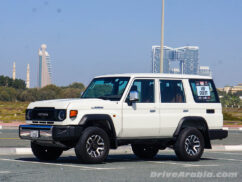
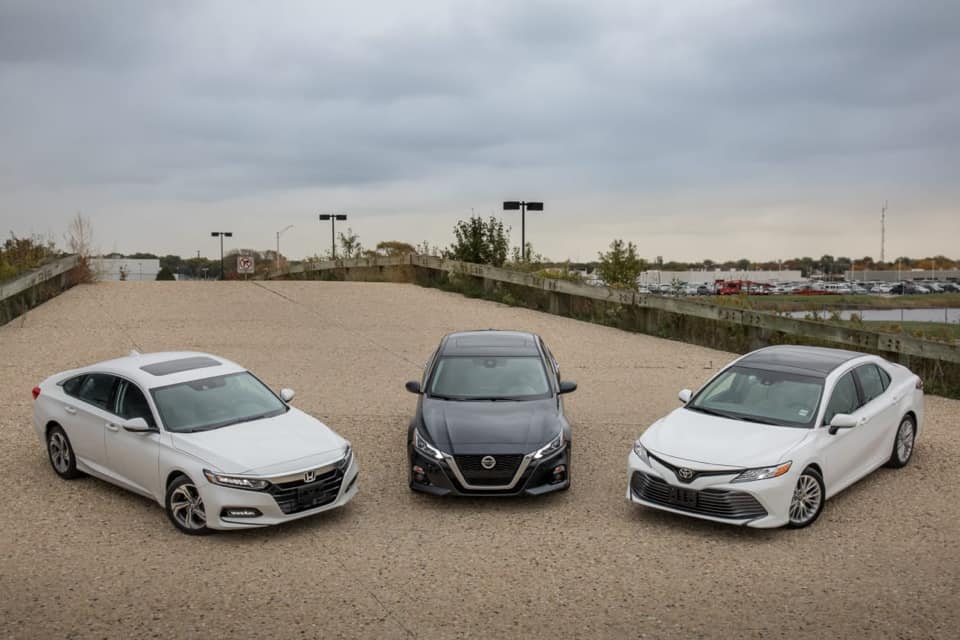
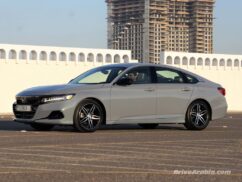
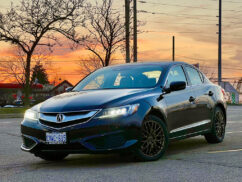
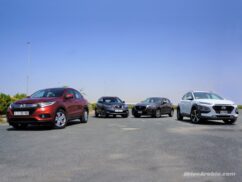
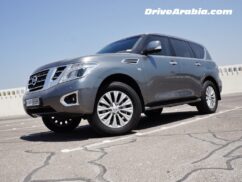
There are no comments. Be the first!